Baker Island National Wildlife Refuge
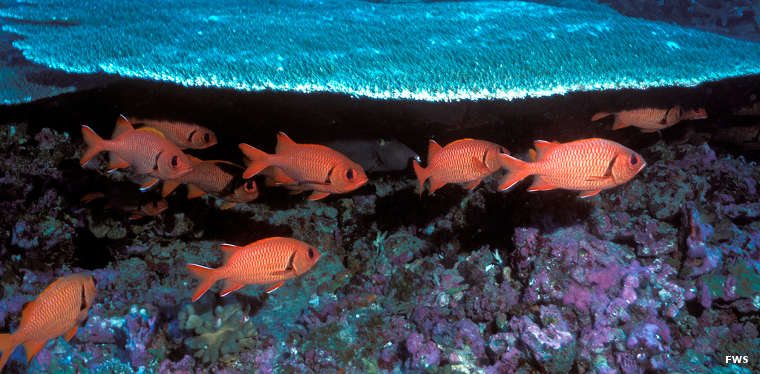
Soldier fish at Baker Island National Wildlife Refuge
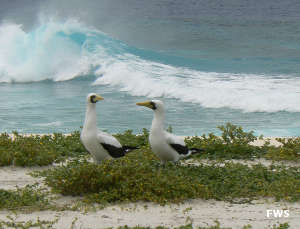
A pair of masked boobies
Baker Island National Wildlife Refuge was established in 1974 to preserve and protect a unique mid-Pacific Ocean environment. The refuge was expanded in 2009 and now includes some 410,184 acres of land and water (about 531 acres are land, the rest water). At the time of that expansion, Baker Island National wildlife Refuge was also included in the Pacific Remote Islands Marine National Monument was established and it included Baker Island within its boundaries. The island is located almost on the equator in the mid-Pacific, about 1,830 nautical miles southwest of Honolulu.
Baker Island is that part of a seamount rising from the ocean floor to protrude above the waves. The equatorial undercurrent deflects off the steep western side of the seamount and pushes nutrient-rich waters up and into the sunlight zone. That makes for an explosion of marine life on the upper slopes of the ancient volcano, a phenomenon that also occurs around Howland, Jarvis and a few other small islands near the equator along the volcanic ridge that Baker is only a small part of.
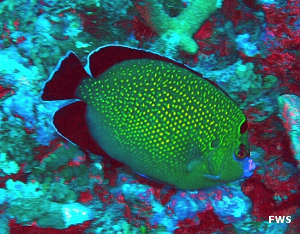
Golden spotted angelfish
During the 1930's a group of Hawaiians tried to colonize the island but failed: the island is very arid and temperatures can be extreme. Typhoons are also a regular occurrence. The colonists also might have had a chance had they not been attacked by the Japanese on December 8, 1941 (the day after the Pearl Harbor attack). There is evidence of past guano mining on the island, too, but someone from somewhere introduced rats and the rats have eliminated many of the birds that were previously regular visitors. There are still 11 species of birds that nest on the island and many species of migrant shorebirds pass through with the seasons.
Vegetation on the low coral island consists mainly of herbs and grasses tolerant of the arid climate. The island is ringed with beaches of either sand or coral shingle. There are at least 104 species of coral living in the waters around Baker Island. The reefs suffered greatly during the global coral bleaching event of 1997-98, then recovered quickly. However, researchers have indicated that another massive coral bleaching event hit the area in 2010.
Threatened green sea turtles, both young and adult, are common around the island, especially on the less windy southern side. The area is excellent habitat for the turtles but they have never been seen on land and there is no evidence of any nesting.
Baker Island is uninhabited and closed to the public. Entry is by permit only. US Fish & Wildlife Service personnel visit the island roughly every two years but sometimes scientists and researchers visit more frequently. To get there: Baker Island is accessible by boat only and it's an eight-day sail from Honolulu.
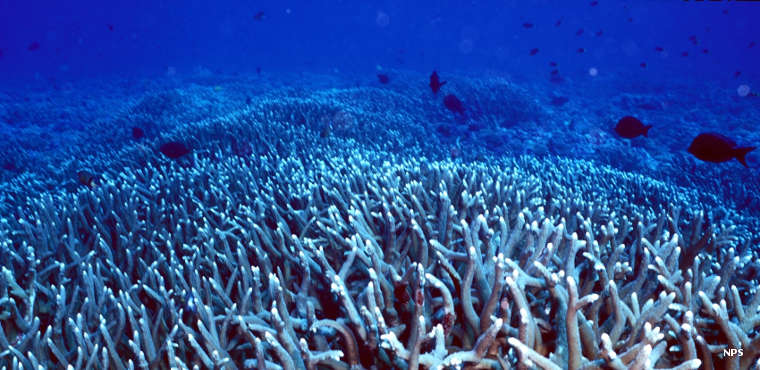
A view of the coral reef offshore from Baker Island
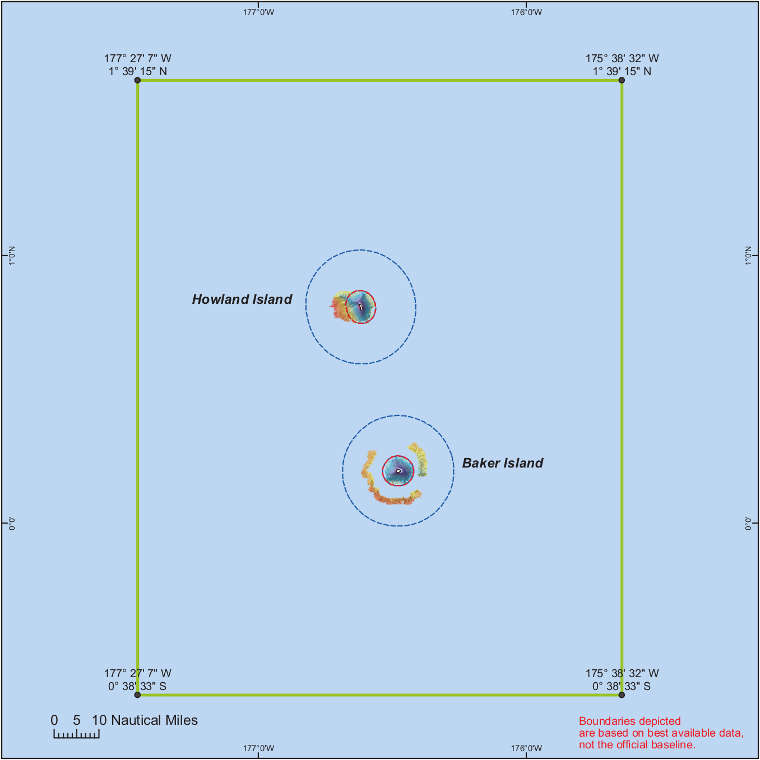
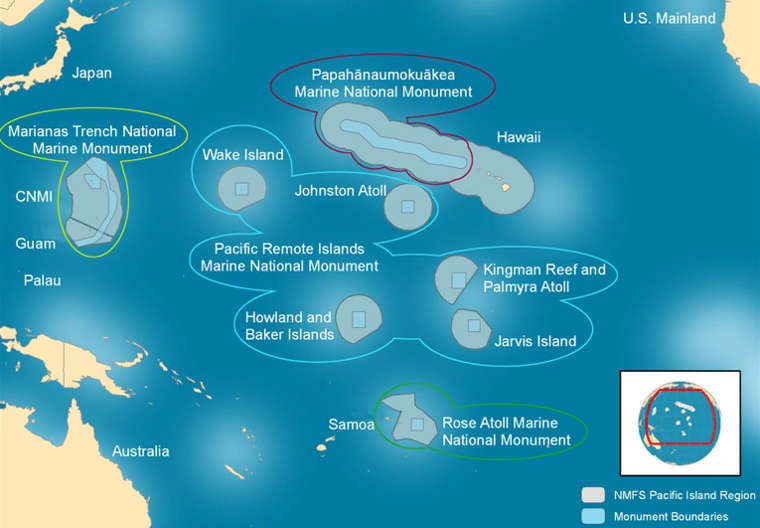
Pacific Remote Islands Marine National Monument map